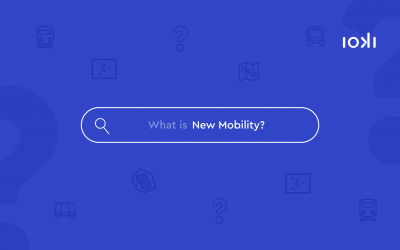To illustrate the concept of Mobility Hubs in practice, let’s consider the following example:
Julia, who lives in a suburb and works in the city centre, makes daily use of the benefits of a Mobility Hub. Her journey starts with a bike ride to the train station, where she parks her bike in a designated area and then switches to a regional train that takes her to the central transport hub in the city centre. After having arrived, she uses an e-scooter for the last mile of her journey. This multimodal travel chain reflects the strengths of mobility stations: flexibility, efficiency, and sustainability.
Rethinking Mobility: Mobility Hub Stuttgart-Vaihingen
The Deutsche Bahn is actively fostering innovations, as demonstrated by the first DB Mobility Hub in Stuttgart-Vaihingen. Before implementation, ioki was commissioned to calculate the actual demand to determine the ideal size of the mobility station and its offerings. The project was realised in collaboration with DB BahnPark, Smart City | DB, and S-Bahn Stuttgart. The aim was to seamlessly integrate the use of e-scooters, bike rentals, and e-mopeds into the travel routes of passengers to and from the station, with a focus on the actual needs of the users. The S-Bahn station in Stuttgart-Vaihingen offered ideal conditions for the pilot project, partly due to the already established Stuttgart Mobility App and a geographical location that favours the use of sharing services.
The Stuttgart-Vaihingen project is part of a larger trend in Germany, where Mobility Hubs are increasingly enriching urban and rural mobility. An early example is Bremen, which introduced the ‘Mobil.Punkt’ stations in 2003. In Berlin, the Jelbi project is promoting similar developments by linking various mobility services with the offerings of the Berliner Verkehrsbetriebe (BVG).



